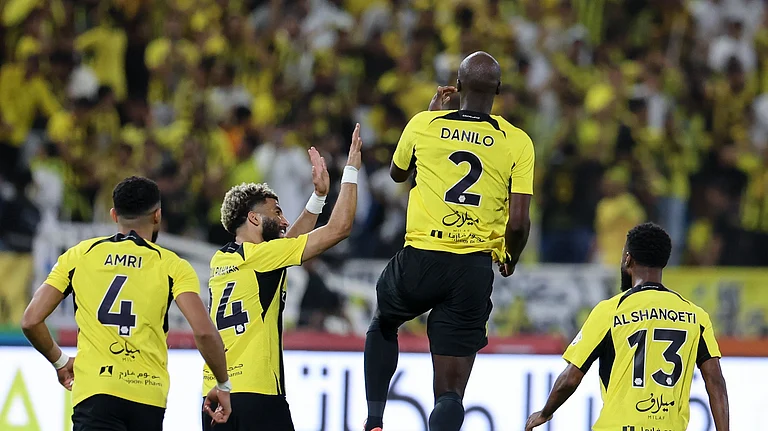The Supreme Court directed on March 23 that all prisoners, under trial or convicted and jailed for less than seven years, be considered for release on a six-week parole, in the wake of the COVID-19 outbreak. On March 28, Dr Kafeel Ahmed Khan, twice-suspended paediatrician from Gorakhpur BRD Medical College, too was supposed to get released. But at the last minute, his parole order was suspended. “All other prisoners on the list were released,” his brother Adeel Khan told this writer. His was a special case, of course.
The Kafeel Khan story is usually told as one that speaks of polarised times and a hard, carceral state—the easy scapegoating of an innocent with the wrong kind of name, dissent being criminalised, acquittal being followed by a harsher charge, bail being followed by more prison…. But there’s another track to the story. A medical one, which connects the present context of COVID-19 to that of another deadly epidemic.
On January 29, a day before India’s first COVID-positive case was reported, Dr Kafeel was arrested from Bombay airport, this time on a political charge. He had already been warning the government and public about the looming health crisis. In fact, he had made awareness videos just before his arrest—explaining what the coronavirus is and how the symptoms would show up. From jail, he wrote two letters. His first letter again warned people not to take COVID lightly and spoke of the dangers of Stage 3 transmission.
The second letter, written on March 19, was addressed to PM Narendra Modi: Dr Kafeel requested that he be released so he could lend his energies to the fight against the pandemic, citing his expertise in the area. He suggested that India move towards mass tests, ramping up the supply of testing centres, ventilators and ICU beds. There was no response. Ironically, the same evening the PM addressed the nation and asked Indians to clap and clang bells to express gratitude towards doctors. That duly happened on March 22. Soon, India entered lockdown and a doctor’s lockup got indefinitely extended—on April 14, an advisory board refused to revoke the NSA charges on him.
But what is the “expertise” Dr Kafeel cited? Let’s briefly reprise the history of his incarceration. On August 10-11, 2017, children in the Japanese encephalitis (JE) ward of BRD Medical College started dying in a cluster. For want of oxygen—the supplier had not been paid. Dr Kafeel, off duty on the day, rushed to the hospital with a few cylinders he had personally arranged. He was hailed for a day as a hero, when the CM warned him for “trying to be a hero”. The story turned there. He saw nine months in prison, before the court gave him bail for want of evidence. “I squarely blame the national media,” Dr Kafeel had told this writer in August 2018. “Those journalists who sit in Delhi and Mumbai didn’t even come down to the ground to ask who I was before damning me.” Final acquittal, by departmental inquiry, came in September 2019—but was immediately followed by another suspension, vengefulness writ large over it.
But all the dramatic headlines had taken the focus away from JE—which killed in the thousands for decades in that region. The annual toll of 5,000-6,000 that JE exacted around Gorakhpur—up to six-seven times what COVID-19 has done across India till now—stood as an alarming signpost to India’s public health frailties. A non-communicable viral disease transmitted by infective mosquito bites, JE shares nothing obvious with COVID beyond a zoonotic link (pigs, rats, water birds are carriers). Specifically, it does not transmit from human to human. But there are commonalities: no specific treatment or vaccine is available for JE; the only possible cure is prevention.
We do not yet know how COVID-19 may interface with classic Indian vulnerabilities—the physiological ones of our rural populations, and the structural ones of our public healthcare. But JE, first appearing in Madras in 1955 and endemic to the Gangetic belt around Gorakhpur since the 1970s, has a clear class bias. “It is a disease of the poor,” says Dr Kafeel, who spent many months after his release tracking JE’s epidemiological map on the ground. “Some 99 per cent of the kids who die are below the poverty line. They live in huts. They don’t have good sanitation, safe drinking water, education. And they don’t have food. Malnourishment equals low immunity,” he told this writer in an interview in May 2018.
His experience turned Dr Kafeel into something of a driven man. He visited hotspots from Kerala to Bihar and Assam, conducting free medical camps, tracking data…trying to see how India’s slothful public health machinery can be primed to deal with epidemics. His focus expanded from JE to the wider pool of diseases bundled under Acute Encephalitis Syndrome (AES). Their causes could be diverse: viral (like JE), bacterial (like scrub typhus), or even fungal or from toxins. But the effects are always “dramatically acute”: fever, extreme neurological impairment (seizures, delirium) and quick death. The data was worrying: Dr Kafeel found that, against a pattern of decline from 2013, the numbers had started increasing since 2016. In 2018, each month had seen at least 250 deaths, he told this writer.
After the 2017 incident, the government has “woken up” and pumped in a lot of money, says Dr Kafeel, but he would like to see a definite strategy. “The BRD in Gorakhpur is only one medical college and it caters to half of Bihar, half of Nepal, half of Purvanchal. It’s no good improving the infrastructure only in BRD. You have to work on the peripheries. Encephalitis doesn’t give you much time: if you don’t act as soon as the fever starts, the child goes into coma, and then it becomes very difficult.... To act early, we need a functioning peripheral-level health system in UP. What we have is a white elephant…buildings, but no staff, no medicines,” he says.
On September 22, 2018, Dr Kafeel went to examine the ‘mysterious disease’ that had killed 70 children in 45 days at Bahraich district hospital. He entered the hospital (with prior permission) to talk to the parents of affected children, and zeroed in on encephalitis. But before he could hold a press conference, he was taken and kept in illegal custody for 18 hours. Sections of the IPC were soon evoked: it was another month in jail. When released, he spoke of having heard cops discussing a staged encounter. Life had been harsh of late—in June, shots had been fired at his younger brother, Kashif Jameel.
In June 2019, Dr Kafeel camped with a few other doctors in Muzaffarpur, Bihar, where the ‘chamki bimari’ had created panic. The death toll had touched 300; a majority were Mahadalit children. Its cause was commonly, if contentiously, taken to be hypoglycaemic toxins present in the litchi fruit acting on malnourished bodies. This is Bihar’s litchi-growing hub—and poor children were often making do with just that fruit for dinner. Dr Kafeel’s fact-finding team, which diagnosed the symptoms as classic encephalitis, listed seven major causes: poor personal hygiene, lack of clean drinking water, malnutrition (which they want recognised as a health emergency), overpopulation, poor vaccination, extreme heat and humidity, and poor sanitation. Not to speak of public health: Union health minister Dr Harsh Vardhan had promised a virology institute and encephalitis treatment centre for Bihar in 2014. What they saw was a 120-bed hospital with 260 patients admitted.
Dr Kafeel’s primary concern is that the government does not reveal the real data about child deaths, making it difficult to assess progress—or its lack—in ensuring health rights to citizens from the most vulnerable sections. Others agree. “Dr Kafeel Khan’s arrest is unjustifiable, a vendetta. He must be allowed to continue his work,” says paediatrician and public health specialist Dr Binayak Sen. Manoj Kumar Singh, an independent journalist from Gorakhpur, also says the government hides AES deaths. “After 2017, they are cagey. They claim to have reduced the encephalitis menace by 70 per cent...the national vector-borne disease control programme shows a decrease for the last two years. But data is being manipulated. Many cases are recorded as Acute Febrile Illness, even if their symptoms are different. My ground reporting reveals no big difference in the situation.”
Meanwhile, the story on the legal track proceeds to script. He was already deemed too vocal on social media…that had already been cited as a reason in his second suspension. Now, as he made his way to a Shaheen Bagh-like protest in Mumbai, they used an anti-CAA speech he made at AMU to net him. He had spoken of a ‘Health for All’ campaign where he and several others had approached ministers, MPs and politicians across India, seeking help to rebuild a shambolic health infrastructure. “Our demand for food, clothes, shelter, health and education is 70 years old. This is everyone’s demand, the poor people’s demand. But they will talk about Bajrang Bali, Kashmir, Ram mandir, CAB, NRC.”
Those words from anyone else would have been seen as the everyday content of dissent, the sort that fills social media. But for Dr Kafeel Khan, it brought jail. Even after an Aligarh court found freedom of speech supreme and granted him bail, the UP government created a new norm and kept him in custody for four more days, at the end of which loomed the NSA. His wife, Dr Shabista Khan, met him in jail after that and fears for his well-being. The Supreme Court had transferred his case to the Allahabad High Court on March 18…but it never even got listed. Another pandemic had come in the way.
(Views are personal)
Mrudula Bhavani is a freelance journalist





















